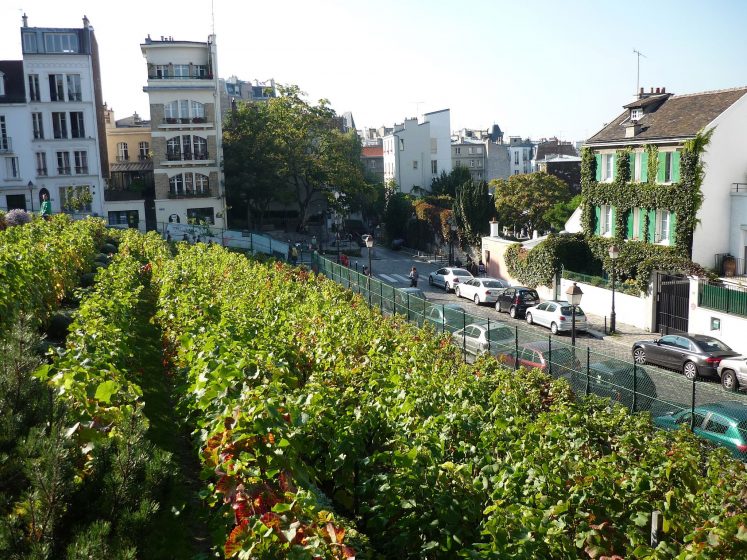The smart Trick of City Blooming That Nobody is Discussing
Wiki Article
The Best Guide To City Blooming
Table of ContentsIndicators on City Blooming You Should KnowA Biased View of City BloomingThe Single Strategy To Use For City BloomingExamine This Report about City BloomingThe Best Strategy To Use For City Blooming
Interested in expanding food for sale in the City of Chicago? Below is a list of often asked questions pertaining to the guidelines and policies that growers must think about when preparing an urban farming task.
The zoning amendment does not modify any type of other codes dealing with composting, structure authorizations, purchasing or renting City owned building, service licenses or environmental contamination. There are existing codes that manage these concerns and they remain in full effect and might be applicable to your task. Neighborhood gardens are typically had or taken care of by public entities, public organizations or community-based companies and maintained by volunteers.
Urban farms expand food that is meant to be offered, either on a not-for-profit or for-profit basis. Due to their commercial function, urban farms need a service license. Yes. A neighborhood garden is allowed to market excess create that was grown on site if the sales are accessory or secondary to the garden's primary objective defined over.
About City Blooming
The quantity of compost product can not surpass 25 cubic lawns at any type of provided time according to the requirements in 7-28-715 of the City's Municipal Code. Due to the fact that the soil at many new garden websites requires amending, garden compost, soil, timber chips, or other materials can be gotten to build or enhance the growing area.
If a building license is required then the hoophouse will be taken into consideration an accessory building. You can discover out more concerning the structure permit requirements by contacting the Division of Buildings. The 25,000-square-foot size restriction is intended to stop a solitary community yard from controling a provided block or taking away from the block's existing residential or industrial character.
The limitation does not use to yards situated in Public Open Space (POS) districts. Can there be even more than one neighborhood garden that is 25,000 square feet on a single block? Fencing is not needed, nonetheless, yards that have large car parking areas may be required to install fence or other landscape design attributes.
The Definitive Guide for City Blooming
B1 & B2 districts require that all business use tasks be carried out inside your home. R areas limit commercial task. The guidelines reflect the objective and intent of the Zoning Code. Is secure fencing needed for metropolitan farms? Yes. Fencings might be needed, together with landscape design and testing, for sure parking lot and outdoor job or storage areas depending on location and the details task taking area.Yes. Urban farms need structure permits and zoning authorizations prior to building. Various other kinds of city review might be called for relying on details frameworks, tasks, size, landscaping, licensing, public heath and stormwater monitoring problems. Several of these needs are identified in the job style or permitting process, nonetheless, the applicant may be liable to independently determine specific licenses or permits that might be needed.
The Division of Service Affairs and Customer Protection can assist establish the particular kind of company license that's required. Off road car park is required for most commercial tasks in Chicago. The called for number of car parking areas is based on the number of workers functioning on website and not the square video footage of the growing room.
Some Known Facts About City Blooming.

A city ranch can offer compost product created on site, however, the operation must comply with the policies in 7-28-715 of the Chicago Municipal Code. Aquaponic systems are allowed inside on metropolitan farms in numerous zoning areas.
As much as five hives or colonies of honey may be maintained as an accessory use. Nonetheless, beekeepers have to sign up with the Illinois Division of Agriculture. For even more details concerning the suggested zoning modification you might speak to the Department of Real Estate and Economic Growth, Bureau of Planning and Zoning at 312.744.8563.
Farming in cities and city locations An urban farm in Chicago. Urban farming refers to different practices of cultivating. https://cityblooming.godaddysites.com/f/city-gardening-embrace-urban-greenery, processing, and distributing food in see this page metropolitan areas. The term likewise relates to the location tasks of pet husbandry, tank farming, beekeeping, and cultivation in a city context. Urban farming is identified from peri-urban agriculture, which takes area in backwoods at the side of residential areas.
How City Blooming can Save You Time, Stress, and Money.
It can involve a movement of organic cultivators, "foodies" and "locavores", who look for to form socials media started on a common principles of nature and area holism. These networks can create using formal institutional support, becoming incorporated right into regional town planning as a "transition town" motion for sustainable metropolitan advancement.In either case, the more straight accessibility to fresh veggie, fruit, and meat products that might be know through city farming can improve food protection and food security while decreasing food miles, resulting in lower greenhouse gas exhausts, consequently adding to environment adjustment mitigation. Some of the first evidence of city agriculture comes from Mesopotamia.
Report this wiki page